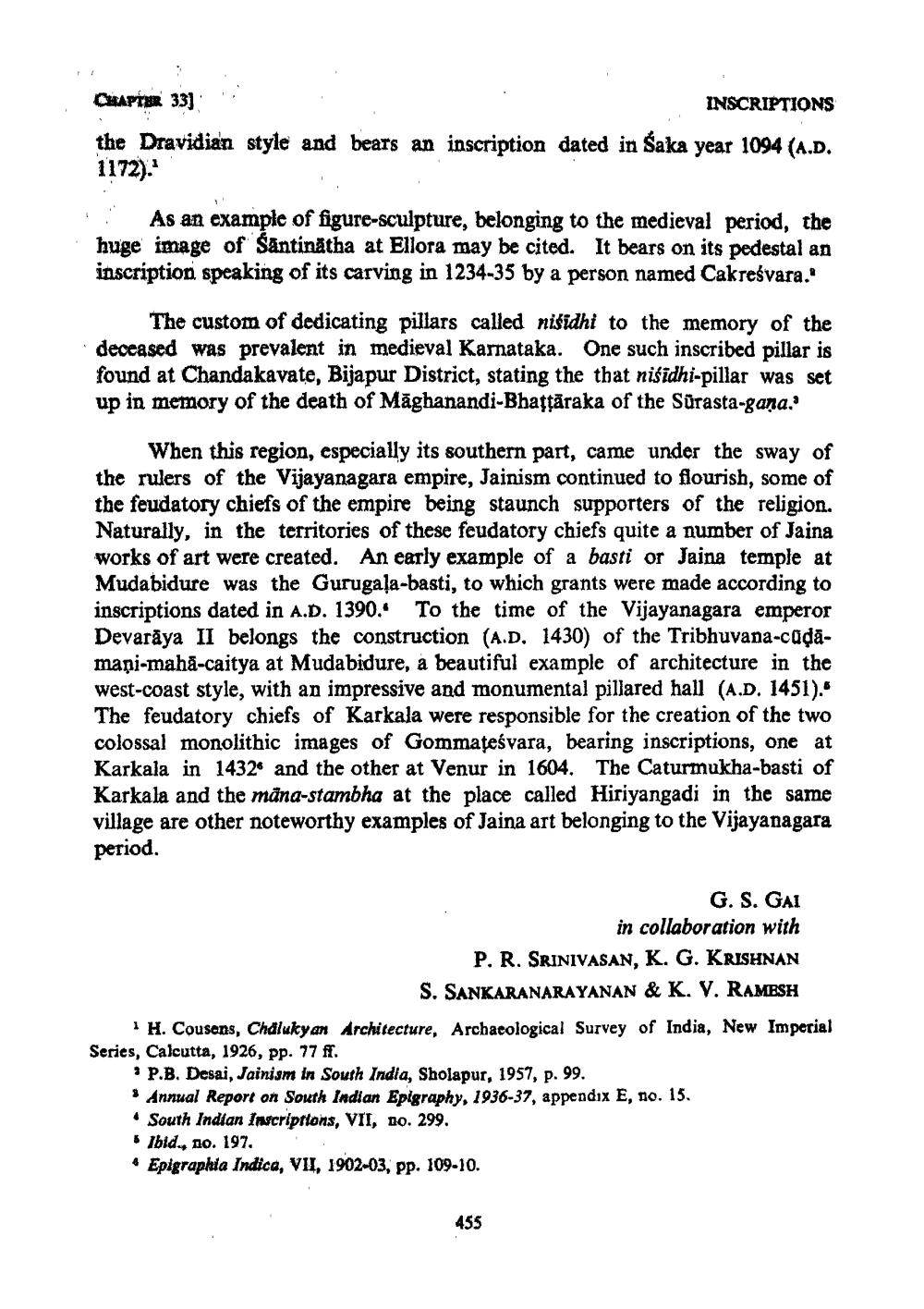________________
CHAPTER 33]
INSCRIPTIONS the Dravidian style and bears an inscription dated in Saka year 1094 (A.D. 1172).
! As an example of figure-sculpture, belonging to the medieval period, the huge image of Santinātha at Ellora may be cited. It bears on its pedestal an inscription speaking of its carving in 1234-35 by a person named Cakreśvara.
The custom of dedicating pillars called nisidhi to the memory of the deceased was prevalent in medieval Karnataka. One such inscribed pillar is found at Chandakavate, Bijapur District, stating the that nisidhi-pillar was set up in memory of the death of Māghanandi-Bhattāraka of the Sürasta-gana.'
When this region, especially its southern part, came under the sway of the rulers of the Vijayanagara empire, Jainism continued to flourish, some of the feudatory chiefs of the empire being staunch supporters of the religion. Naturally, in the territories of these feudatory chiefs quite a number of Jaina works of art were created. An early example of a basti or Jaina temple at Mudabidure was the Gurugaļa-basti, to which grants were made according to inscriptions dated in A.D. 1390. To the time of the Vijayanagara emperor Devaraya II belongs the construction (A.D. 1430) of the Tribhuvana-cadāmani-mahă-caitya at Mudabidure, a beautiful example of architecture in the west-coast style, with an impressive and monumental pillared hall (A.D. 1451)." The feudatory chiefs of Karkala were responsible for the creation of the two colossal monolithic images of Gommateśvara, bearing inscriptions, one at Karkala in 14326 and the other at Venur in 1604. The Caturmukha-basti of Karkala and the mana-stambha at the place called Hiriyangadi in the same village are other noteworthy examples of Jaina art belonging to the Vijayanagara period.
G. S. GAI
in collaboration with P. R. SRINIVASAN, K. G. KRISHNAN
S. SANKARANARAYANAN & K. V. RAMESH * H. Cousens, Chalukyan Architecture, Archaeological Survey of India, New Imperial Series, Calcutta, 1926, pp. 77 ff.
: P.B. Desai, Jainism in South India, Sholapur, 1957, p. 99. * Annual Report on South Indian Epigraphy, 1936-37, appendix E, no. 15. « South Indian Inscriptions, VII, Do. 299. 5 lbid. no. 197. 4 Epigraphia Indica, VII, 1902-03, pp. 109-10.
455




